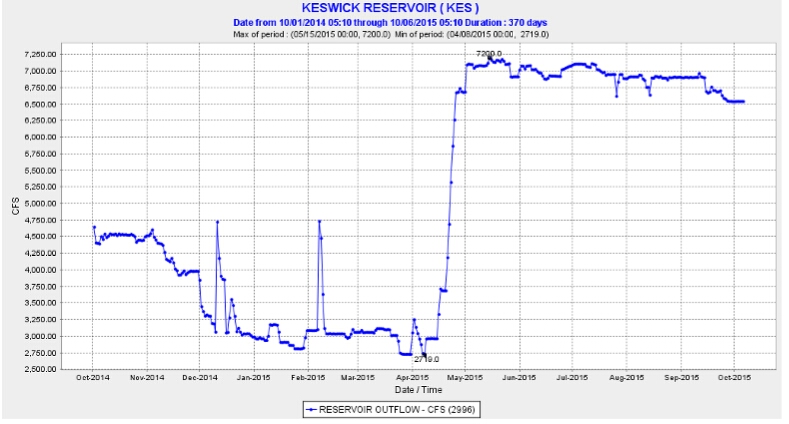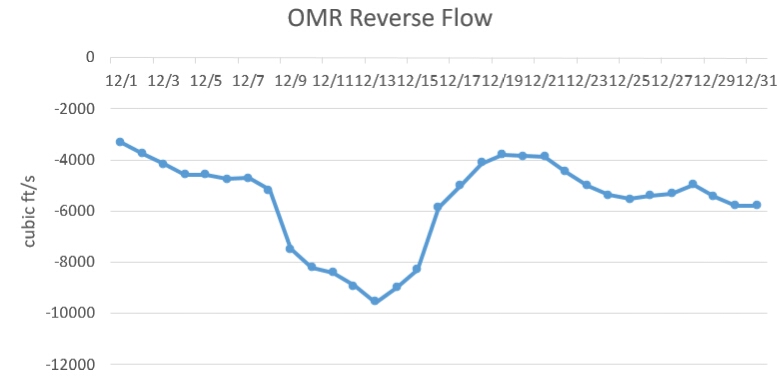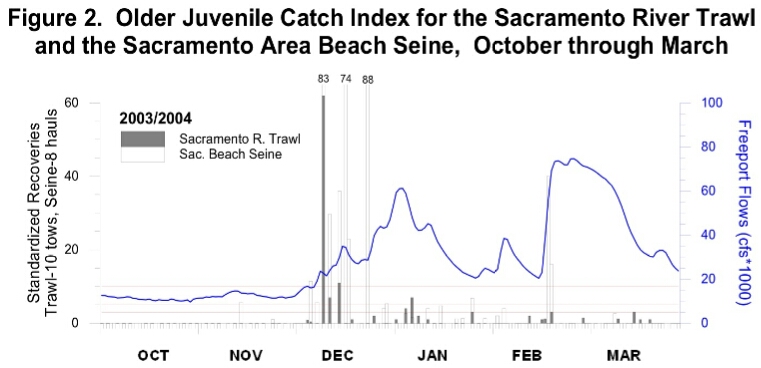The Delta independent Science Board, made up mostly of non-Californians and non-fish biologists, waded into the fray on Delta issues again with their recent report: Flows and Fishes in the Sacramento-San Joaquin Delta – Research Needs in Support of Adaptive Management 1
After 50 years of extensive research and adaptive management, the Delta water managers still believe we need the insights of outsiders before the secrets of the Delta are exposed to improve water management for fish. Once the center of world-wide estuarine science beginning in the 60’s and 70’s, the San Francisco Bay Delta now has new advice sought from outside sources. I came to the Bay-Delta in the late 70’s as an outsider to learn from and participate in comprehensive fish-ecosystem science going on in the Bay-Delta. I was honored to participate in and contribute to Bay-Delta science. Many of the young scientists who came with me then and since have contributed decades of their careers to Bay-Delta science. Yet there is this continuing quest for more outside input fraught with non-fish science.
The Report

“The economic, ecological, and social costs of scientific uncertainty in water management controversies are significant – and to some degree unavoidable. This report therefore recommends, first and foremost redoubling effects to identify causes and effects concerning fishes and flows in the Delta.” (Page 5). Uncertainty is not the cause of the failure in protecting the Bay-Delta ecosystem. It is a failure to use science with its uncertainties to protect the ecosystem. After 40-plus years of study, the answers are obvious. Redoubling? Why not simply recognizing the obvious? There are no doubts that changes in flows are the cause of most of the Delta problems, and that changes designed to reduce entrainment of fish at the Delta export pumps (OMR, etc.) have proven ineffective. There is no need to redouble efforts to understand the relationship between flows and fish. We know why the Winter Run salmon were wiped out below Shasta in 2014 and 2015. We know why Delta and Longfin Smelt populations have been at record lows the past two years.
“The habitat and flow needs of the native species are difficult to define in the transformed place and in a novel ecosystem.” (Page 5). The habitat and flow needs are well known. The ecosystem, though “transformed,” is not novel. Anyone who has been here awhile and studied the fish knows.
“Focus on cause and effect – the mechanisms that enable flows to affect fishes. Deeper causal understanding is important for identifying and reducing risks to water supply and fish populations.” (Page 5). We’ve been through this time after time. Overwhelmingly, finding the political will to follow the science we already have is far more critical than fine-tuning the mechanistic understanding of how fish respond to flow. The problem in the Delta is systemic: water management has turned the hydrograph on its head and deprived the estuary of half of its flow (in dry year sequences, more than half). The State Water Board’s 2010 Delta Flow Criteria Report 2 got this fundamentally right: on a mass and systemic basis, Delta inflow and outflow need to be radically increased to provide basic system functions, including variability. Not every effect is a direct effect. Focusing only on direct effects – the “causal mechanisms” – is overwhelmingly about “risks to water supply.” Beneath the surface of hunting for mechanisms is an engineering-style belief that one can surgically provide water to produce this or that benefit at the exact moment it’s needed. Sure, better understanding is good, and different specific actions can help. But the need isn’t met by adding up specific actions. We need to restore underlying ecosystem function that serves as a foundation for targeted improvements. Right now we aren’t even close.
“Understanding the dependencies of fishes on water flows is central to understanding the Delta ecosystem. Relationships between fishes and flows drive state and federal policy and related regulatory and management decisions, and consequently have been central to legal arguments and decisions.” (Page 9). Delta water quality control plans, and water rights orders since the 1960s (mainly D-1485 and D-1641), have recognized (and focused) on the relationship between flows and fishes. Earlier, the focus was on striped bass and flows (D-1485), but more recently the focus has been on smelt-salmon and flows (D-1641). There have been changes in summer standards that hurt striped bass while strengthening winter-spring standards have helped smelt and salmon. But after decades of management under the standards and an array of biological opinions, it is obvious to most that the level of protections has been inadequate. The problem is not a lack of science and understanding; it is a lack of commitment to them.
“A comprehensive, integrative, and well-planned scientific approach focused on processes, drivers, and predictions is needed to aid near-term and long-term adaptive management and to predict how future changes might affect fishes.” (Page 21). The Bay-Delta has had this for 50 years. The science, data, and adaptive management are well documented, as well as reflected in water rights, water quality standards, biological opinions, and management and recovery plans. But most important of all, they are carried in the minds of hundreds of Bay-Delta scientists who have dedicated their careers to this purpose.
“The development of a generalized fish model portable for different fish species and for different water management decisions is needed to forecast expected consequences and timelines for adaptive management strategies.” (Page 23). Such models already exist in many forms that reflect and carry the knowledge of what has been learned over the past 50 years. Models developed in the 60’s for striped bass still work today.
Follow-up Workshop
At the follow-up Delta Independent Science Board workshop in December, Dr. Lund, chairman of the Science Board, discussed the major findings of the report, the first being that connecting flows and fishes is central to achieving the state’s coequal goals. “The modern Delta is not a native ecosystem but is dominated by non-native species with some natives, and that’s a particular challenge for some of the ecosystem goals for the Delta,” he said. “Statistical analyses show that flows do affect fish, but decisions need a little bit more causal understanding of how flows involve fishes, especially as we try to manage the Delta and make some larger changes over time. Where larger changes occur in the Delta that we have to respond to, we need a more causal understanding of how these relationships work.”3 In my experience, when correlations that support science theory continue becoming more statistically significant with each added year of data, it is time to accept the theories and start doing something. Using the same excuses for inaction and continuing to promote more science will not save the Bay-Delta ecosystem.
In Conclusion
What has been missing for decades is this: our locally grown fisheries scientists have no access to what are often called the “knobs” of management in the Delta. Instead of scientists, resource agency managers and water purveyors constrict the range of adaptation to protect water supply at the expense of fishes and their habitats. Adaptive management is driven by managers. Our Smelt and Salmon Working Groups are stymied by senior management and by political oversight and control. Adaptive management in the Delta has become a synonym for how far fisheries agency managers will agree to weaken resource protection. Examples include weakening water quality standards in droughts; allowing unrestricted water transfers through the Delta; and closing the Delta Cross Channel gates in summer.
It is time to listen to our home-grown fish scientists and let them turn the knobs in the right direction.
- http://deltacouncil.ca.gov/sites/default/files/2015/09/2015-9-29-15-0929-Final-Fishes-and-Flows-in-the-Delta.pdf ↩
- http://www.swrcb.ca.gov/waterrights/water_issues/programs/bay_delta/deltaflow/docs/final_rpt080310.pdf
The “Note to Readers” that now appears at the front of this report as linked above was not in the original document. This Note, which downplays the importance of the Report, is another example of managers devaluing science. ↩
- http://mavensnotebook.com/2015/12/09/delta-stewardship-council-discusses-flows-and-fishes-in-the-delta-adopts-delta-conveyance-principles-and-addresses-single-year-transfers/ ↩





